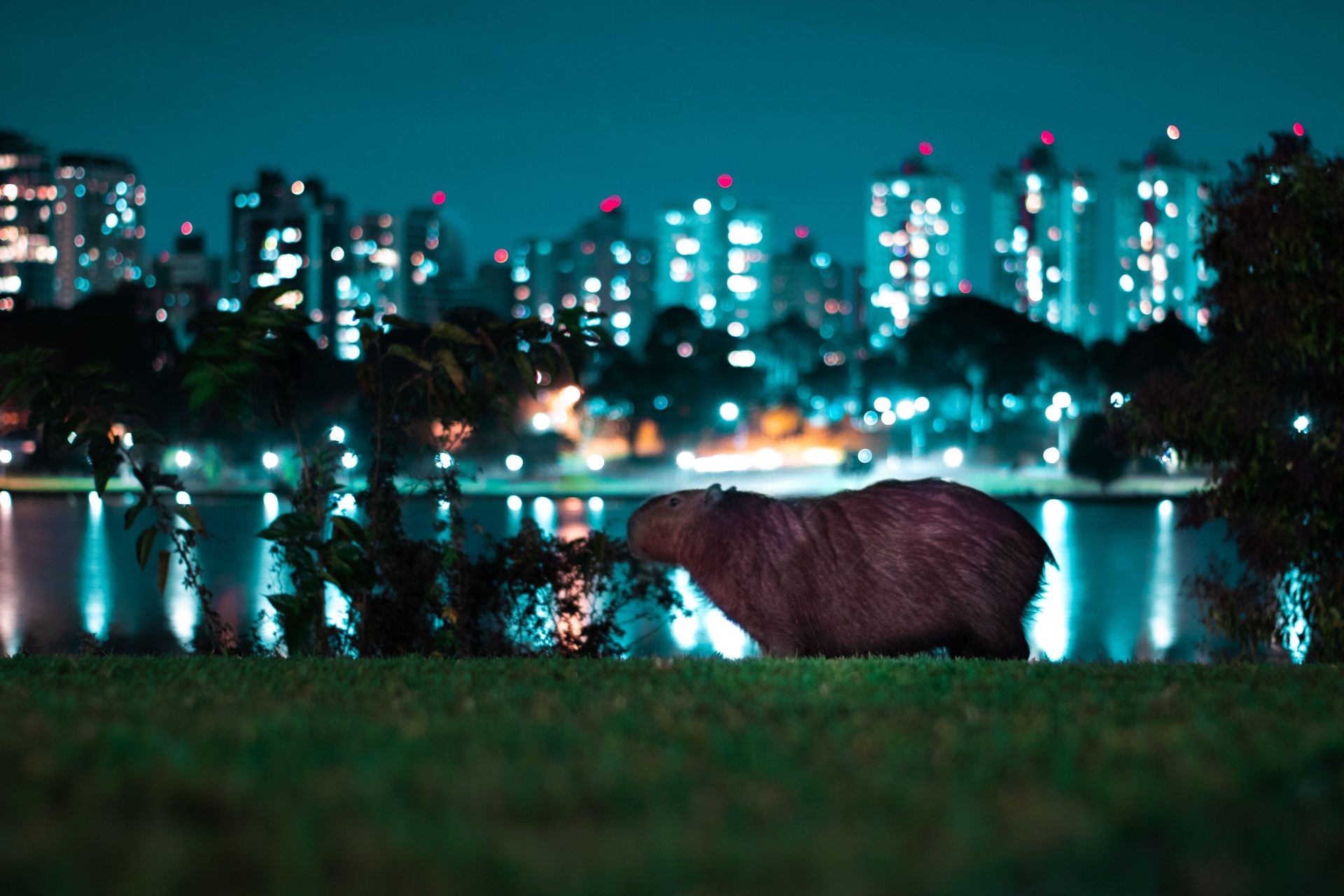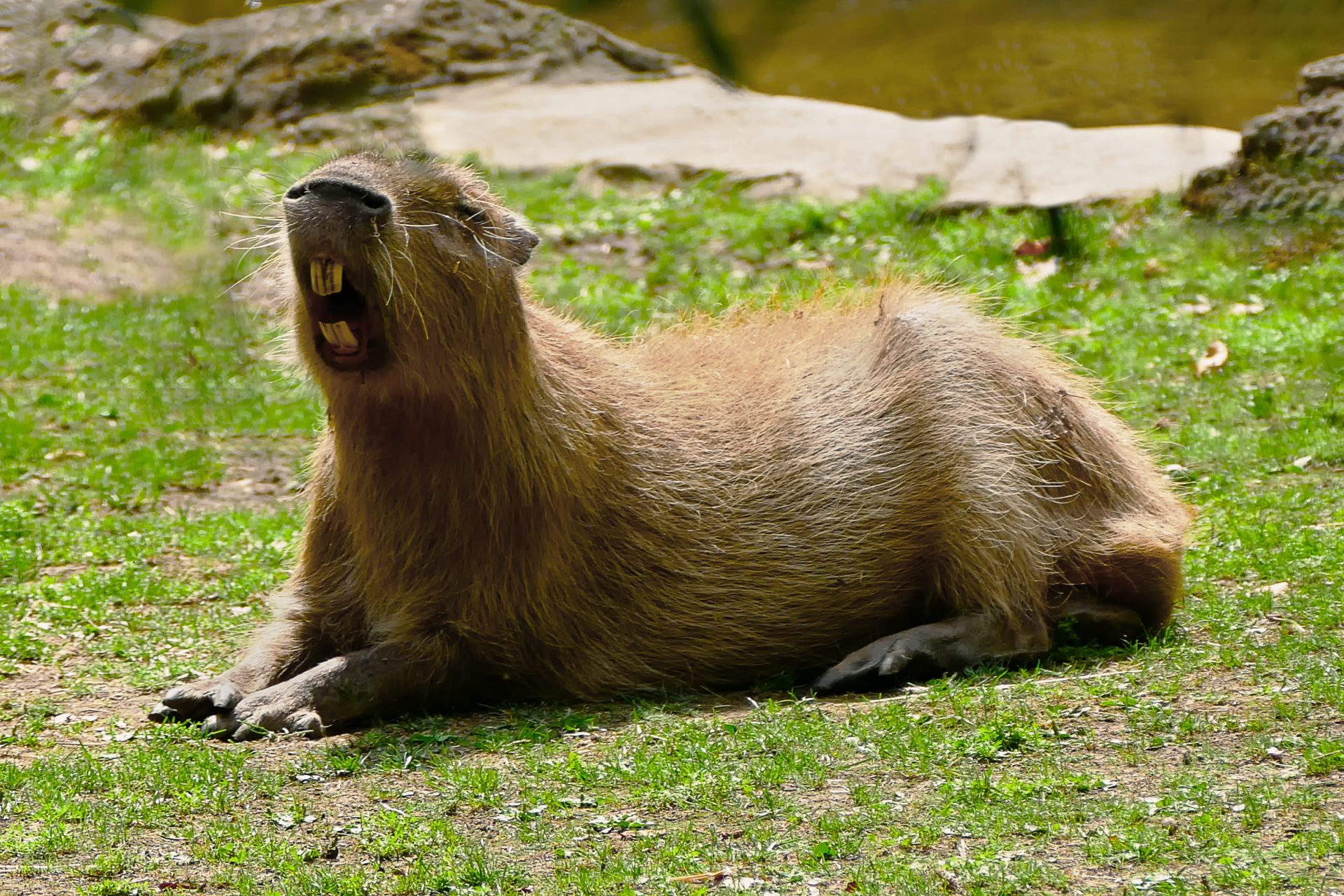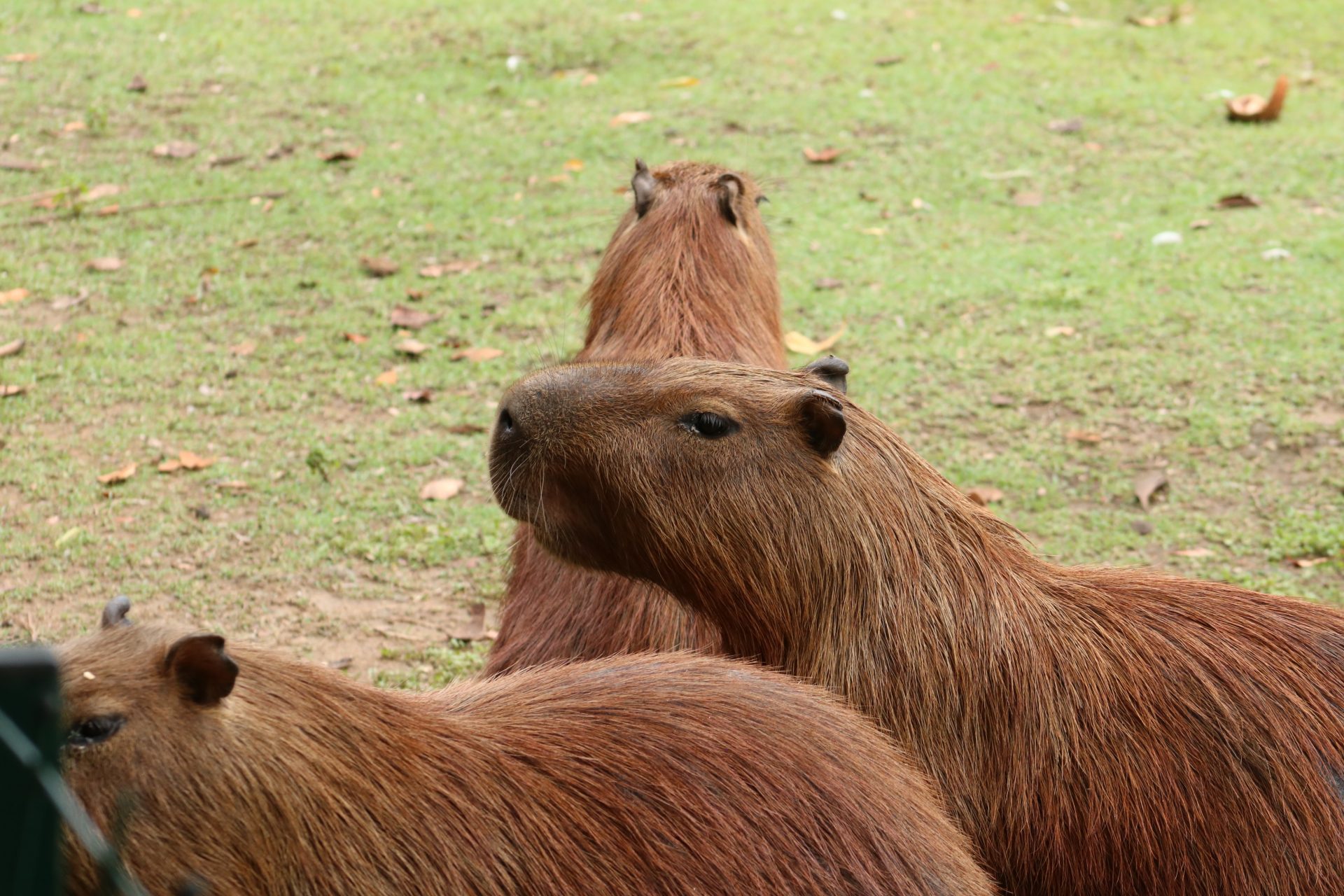This adorable animal went viral on social media: do you know its name?
Since 2022, searches for the term 'capybara' (especially in Russian) have increased significantly on Google Trends. The animal has won the hearts of many people thanks to its cuteness and friendliness.
Follow Showbizz Daily to stay informed and enjoy more content!
Genetically, the capybara is close to guinea pigs. It is the largest rodent that exists, reaching up to 1.35 meters in length and weighing 80 kilos. These animals live in groups that vary between ten and up to fifty animals.
(Photo: Unsplash / Erick Martens)
Several stories of interactions with these animals have been shared and they have even served as inspiration for some artists.
Russian artist Capital She-Us was a great promoter of this craze with their song 'Capybara', which immediately became successful.
(Photo: Reproduction / YouTube)
Influencer Eder Alex, who gives tips on books, films, series, and podcasts, chose the capybara as a symbol to mark the recommendations he shares on his platforms.
(Photo: Reproduction / TikTok)
Capybaras are originally herbivorous animals that live in estuaries, swamps, and on the banks of rivers in parts of South America.
(Photo: Unsplash / Joshua J. Cotten)
Capybaras are semi-aquatic animals and spend much of their time immersed to maintain moisture in their skin and regulate their body temperature.
(Photo: Pixabay / Paola3131pc)
However, capybaras are increasingly present in urban spaces, because humans have reduced their natural habitats. In cities with lakes or rivers like Recife and Rio de Janeiro, in Brazil, it is possible to see them.
(Photo: Unsplash / João Leal Júnior)
Capybaras are animals that adapt easily and can live well in different environments. Their dietary flexibility allows them to consume any type of grass and foliage.
(Photo: Unsplash / David Valentine)
To escape predators in the water, capybaras have membranes that help them move faster. At the sign of any danger, they dive and can stay underwater for up to 5 minutes.
(Photo: Unsplash / Kevin Wright)
Look carefully and notice that the capybara's eyes, ears, and nostrils are aligned on the top of the head. This anatomy allows them to keep these structures out of the water and even sleep in the water.
(Photo: Unsplash/ Klaus Steinberg)
Despite their chubby physique, capybaras are excellent runners, reaching speeds of 35 km/h for stretches of 100m to 200m. And, to maintain their fluffy shape, capybaras eat up to 30 kg of leaves every day
(Photo: Unsplash / Wesley Caribe)
To maintain their fluffy shape, capybaras eat up to 30 kg of leaves every day.
Follow Showbizz Daily to stay informed and enjoy more content!
Like other rodents, capybaras' teeth never stop growing, and, in order for them to stay at the ideal length, they must wear them down by grinding them and chewing food.
Photo: Klaus Steinberg / Unsplash
Capybaras also eat the same food twice, that is, they eat their feces. However, the animals are smart and know how to identify whether the fecal material has already been digested once or not.
(Photo: Pixabay / Elsemargriet)
The gestation period of a female capybara lasts an average of 120 days. The future mother can give birth to up to 3 cubs. These babies are called 'pups' and stay with their parents until they are one year old. Then, they go in search of their band.
(Photo: Pixabay / Falco)
The capybara is such a communicative animal (with members of its groups) that it makes unique sounds to share important information, as a warning of danger or to guide its young.
(Photo: Unsplash / Joel Oliveira)
Every sound has a meaning and these noises can be teeth grinding, squealing, whining, whistling, crying, barking and clicking.
For some biologists, capybaras are called "nature's ottomans", as they are a place where some birds like to rest. In some biomes, the relationship is mutual with birds that feed on insects from the rodents' backs.
(Photo: Pixabay / DenisDoukhan)
Capybaras have an extremely docile temperament, but they are not domestic animals! It is recommended not to interact directly with them.
(Photo: Pixabay / chacha8080)
Biologist and Science professor Moisés Serejo explained it to 'Cães e Gatos' magazine: "Despite appearing calm, capybaras are wild animals and will always defend their young. Approaching a gang or one of them can be perceived as an attack."
Follow Showbizz Daily to stay informed and enjoy more content!
(Photo: Pixabay / Anaelenasanabria)
































